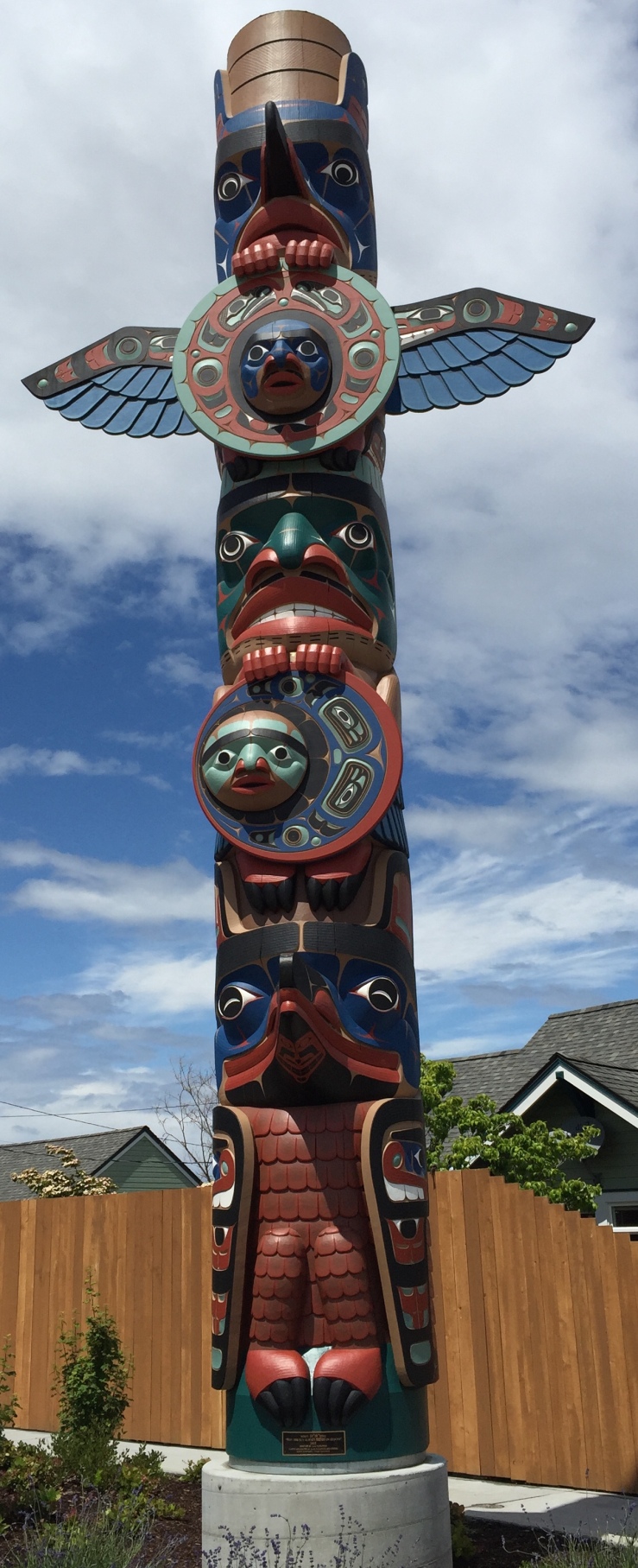
“Sockeye. Chum. Coho. Chinook. Pink. Steelhead. When I moved to Seattle in the late 1980s, people talked of fish once seen in creeks that had long since been forced under strip malls and parking lots; they spoke of how many salmon they used to catch and how big those sockeye or Chinook were. The anadromous Pacific salmon and trout that had once dominated the rivers and streams of the Pacific Northwest – Washington, Oregon, Idaho, Northern California, British Columbia, and reaching into Alaska – seemed to be everywhere yet nowhere, appearing and then disappearing like an old family ghost, spoken of often but usually in the past tense. Like ghosts fading from human memory, the salmon’s return to their ancestral home seemed to become more tenuous with each passing year.” Turning Homeward: Restoring Hope and Nature in the Urban Wild, by Adrienne Ross Scanlan
Several readers of my post about the memoir You Don’t Have to Say You Love Me were moved by Sherman Alexie imagining the last salmon trying (and failing) to make its way past the newly built Grand Coulee Dam. Without wild salmon, he wrote, his Native American parents and his people had become spiritual orphans.
Here is another memoir haunted by salmon, written by a woman who moved from upstate New York to Seattle and wanted to cultivate a sense of belonging in her new surroundings. Adrienne Ross Scanlan sought connections with nature in order to form bonds with her new home.
As a citizen scientist, Scanlan ventured to hidden places in Seattle where streams and waterways had been diverted by urbanization – on the edge of McMansion housing developments and golf courses, underneath overpasses and inner city bridges – so she could help monitor salmon runs. Along with other volunteers, she restored habitats by salvaging native plants and removing invasive species.
She writes:
“Time and again, I would see this coming together of strangers engaged in restoring some small and often overlooked place. Time and again, my notions of how to save the world expanded beyond protests and boycotts, citizen lobbying, and picketing to also include these quieter sustained actions of repair. There was little time to talk before splitting off to our physical tasks, yet I still met bearded fish geeks and stout-bellied businessmen, veterans and vegetarians, Native Americans, recreational and commercial fishermen and fisherwomen, high school students needing community service credits, and parents and grandparents introducing their younger children to a world beyond electronic screens.”
Scanlan’s deepening connections to the natural world and to like-minded volunteer citizens bring her out of herself and offer solace as she copes with the death of her father. The salmon’s epic struggle to move upstream against all odds in order to procreate resonates as Adrienne meets the man she’ll spend her life with and they contemplate starting a family.
“…I’d have my new home, the one created when Jim and I moved in together. It wasn’t lost on me that now that I was finally ready to create a permanent home, Jim and I couldn’t afford to buy a house in Seattle’s hot, if not inflamed, real estate market. So we rented. We turned over soil in a backyard planting box long ignored by former tenants and an absentee landlord, put in compost, and planted seedlings of broccoli and tomatoes, raspberries and strawberries; we unpacked boxes, compared housewares, and cruised Ikea and Goodwill and yard sales for bookcases and bric-a-brac; we discussed whether one day we could afford to put an offer on our rented house with its double lot, incense cedar, wildly overgrown laurel and holly, and close proximity to good public schools. Then we compared our health insurance policies, and we realized that the window for adding me to Jim’s policy at the University of Washington would close in November. So we got a marriage license, called our best friends to be best man and matron of honor, and had a rushed wedding in our living room with a ceremony performed by a justice of the peace whom we never saw before and will never see again. And we waited to see if we’d been successful in creating the family we both want, just as I waited for another fish to head upstream…”

Through a difficult pregnancy and the premature birth of her daughter, Scanlan watches the salmon and learns resiliency.
“Her first spring, Arielle lay snuggled in fleece blankets in her incubator. Her second spring, I wheeled Arielle in her stroller around Green Lake to show her turtles. Turtles, cattails, red-winged blackbirds, daffodils – it was all the same to Arielle, all part of a big world she had yet to discover.
As Orwell wrote, ” …Spring is still Spring. The atom bombs are piling up in the factories, the police are prowling through the cities, the lies are streaming from the loudspeakers, but the earth is still going round the sun, and neither the dictators nor the bureaucrats, deeply as they disapprove of the process, are able to prevent it.”

Sherman Alexie writes of his family and his people becoming spiritual orphans without the wild salmon. In her memoir, Pacific salmon seem to be Adrienne Ross Scanlan’s spirit animal.
As wildlife becomes threatened and disappears, do we humans risk becoming spiritual orphans? Do you think we realize, as we go about our daily lives, the magnitude of what we stand to lose? Going forward, what do you think will happen?













 I purchased the young adult book
I purchased the young adult book 










